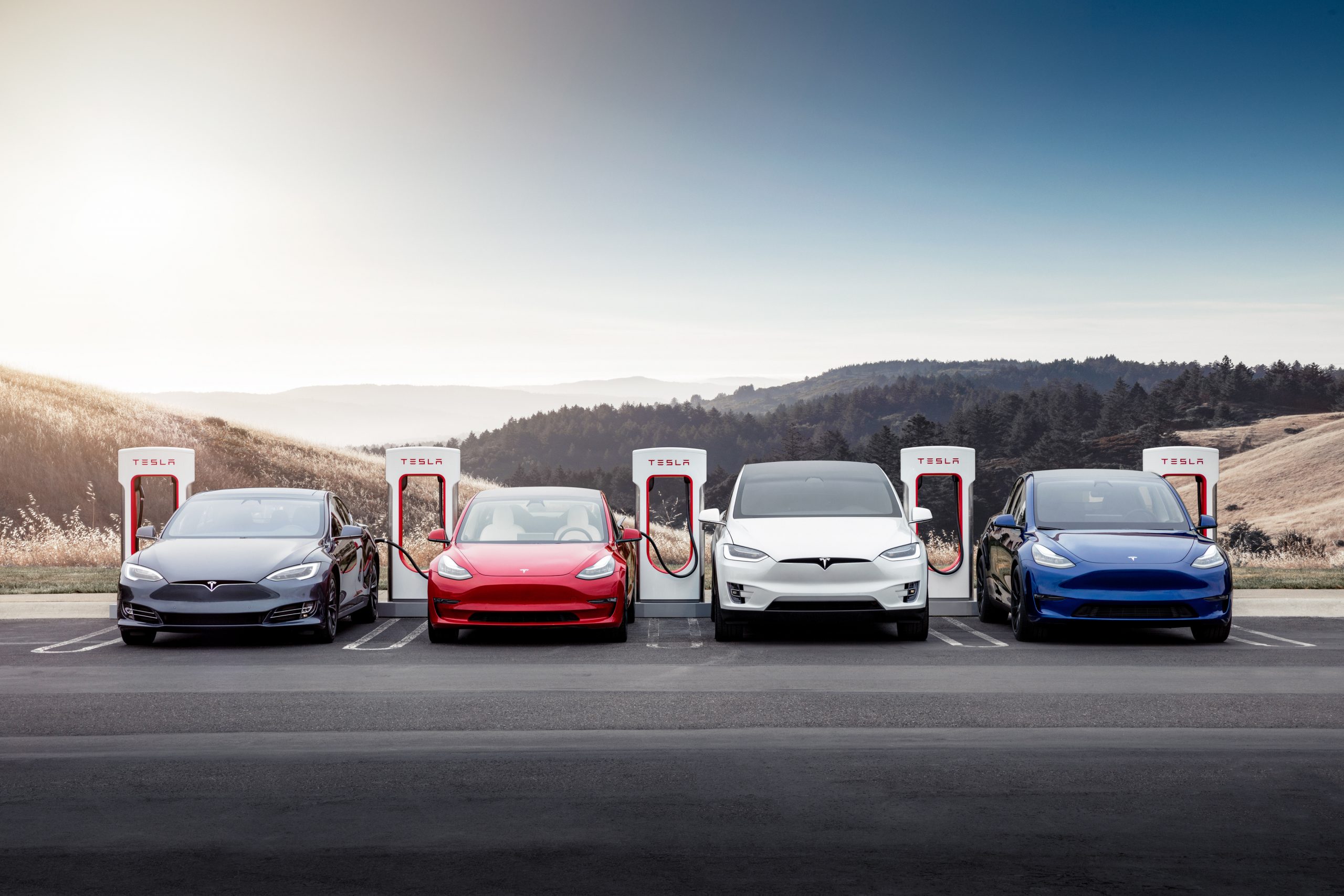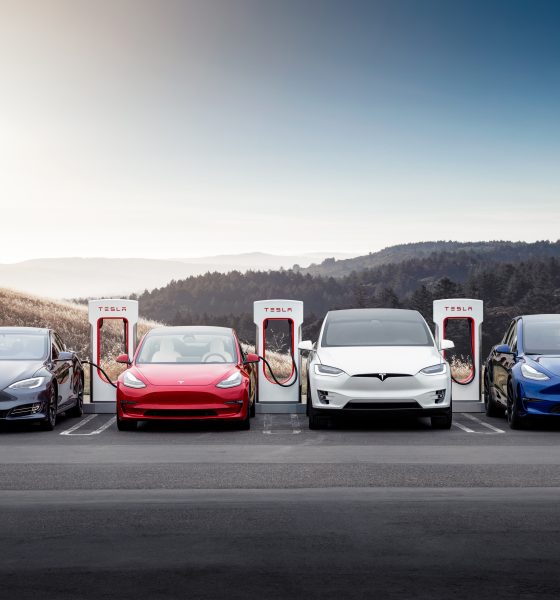

News
Tesla India plans take a hit as Minister shoots down talks of import tax reduction
Tesla’s entrance into India took a giant step backward as Government officials shot down the potential for import duty reductions on Monday. Attempting to enter the Indian automotive market with its sustainable vehicles, Tesla has petitioned for lower import taxes before committing to a Gigafactory in India. Still, the automaker and the government seem to be having trouble working on an agreement that would keep both parties interested.
After applying for and receiving two business licenses in India, Tesla seemed to be working toward an imminent entrance into the market. Rumors of a potential Gigafactory India have echoed through the community of well-known followers of Elon Musk, but the Tesla CEO shot down any potential of the automaker establishing production lines in the country in July.
Elon Musk: If Tesla can be successful with imports, India Gigafactory “likely”
“If Tesla is able to succeed with imported vehicles, then a factory in India is quite likely,” Musk Tweeted on July 23rd. Essentially, this statement eliminated any potential for a Tesla Gigafactory in India if the automaker could not first test demand for its products in the country. A smart move financially, Tesla spends hundreds of millions, even billions of dollars on production facilities. It would be a big gamble for the young and quickly-charging automaker to establish a full-blown residency in India without any sort of real-world data hinting toward robust demand. The government is willing to let import duties be lightened to 40%, as long as Tesla commits to building a factory in India at some point. This requirement throws a wrench into Tesla’s plans, as it is not willing to agree to these terms currently.
If Tesla is able to succeed with imported vehicles, then a factory in India is quite likely.
— Elon Musk (@elonmusk) July 23, 2021
“No such proposal is under consideration”: Minister
Now, Minister Krishan Pal Gurjar says that there is no talk of the government considering a reduction of import duties. On Monday, he told Parliament (via Bloomberg):
“No such proposal is under consideration in Ministry of Heavy Industries.”
Government ministries are currently run under Prime Minister Narendra Modi, who has emphasized tremendous support for local manufacturing efforts. The government, at this time, seems unwilling to consider reduced import duties or Tesla’s import plans at all because local manufacturing has taken priority.
India is not a country with a robust history of electrification, either. EVs accounted for less than 1% of annual car sales, despite being Asia’s third-largest country. Additionally, EVs are not in heavy demand in India due to higher production costs and minimal charging infrastructure, Maruti Suzuki India Ltd., Chairman R.C. Bhargava said in an annual report released earlier today. “Unfortunately, the technology presently available leads to electric cars being produced at a cost much higher than the conventional cars. This, along with the lack of charging infrastructure, makes it very difficult to sell electric cars to people who can only afford small cars.”
Import Duties are Getting in the Way
Imports are a tough thing to get by for consumers in India. Because of the heavy import duties the country has applied on vehicles, many consumers are unwilling to spend what the tax adds on to the price of the car. For vehicles under $40,000, import duties are 60%. Any car that costs more than that is subject to a 100% tax, doubling the price of the car.
This has been perhaps Tesla’s only barrier for entering the market as a vehicle manufacturer without building a factory there. Tesla already could export vehicles from Giga Shanghai to India, but few are willing to pay the massive price tag that comes with the car due to the duties. It is unknown what Tesla will do moving forward, but the automaker and the Indian government seem to be playing a game of chicken, seeing who will make the give up potential requests to move toward a deal.
What do you think? Let us know in the comments below, or be sure to email me at joey@teslarati.com or on Twitter @KlenderJoey.

News
Tesla FSD fleet is nearing 7 billion total miles, including 2.5 billion city miles
As can be seen on Tesla’s official FSD webpage, vehicles equipped with the system have now navigated over 6.99 billion miles.

Tesla’s Full Self-Driving (Supervised) fleet is closing in on almost 7 billion total miles driven, as per data posted by the company on its official FSD webpage.
These figures hint at the massive scale of data fueling Tesla’s rapid FSD improvements, which have been quite notable as of late.
FSD mileage milestones
As can be seen on Tesla’s official FSD webpage, vehicles equipped with the system have now navigated over 6.99 billion miles. Tesla owner and avid FSD tester Whole Mars Catalog also shared a screenshot indicating that from the nearly 7 billion miles traveled by the FSD fleet, more than 2.5 billion miles were driven inside cities.
City miles are particularly valuable for complex urban scenarios like unprotected turns, pedestrian interactions, and traffic lights. This is also the difference-maker for FSD, as only complex solutions, such as Waymo’s self-driving taxis, operate similarly on inner-city streets. And even then, incidents such as the San Francisco blackouts have proven challenging for sensor-rich vehicles like Waymos.
Tesla’s data edge
Tesla has a number of advantages in the autonomous vehicle sector, one of which is the size of its fleet and the number of vehicles training FSD on real-world roads. Tesla’s nearly 7 billion FSD miles then allow the company to roll out updates that make its vehicles behave like they are being driven by experienced drivers, even if they are operating on their own.
So notable are Tesla’s improvements to FSD that NVIDIA Director of Robotics Jim Fan, after experiencing FSD v14, noted that the system is the first AI that passes what he described as a “Physical Turing Test.”
“Despite knowing exactly how robot learning works, I still find it magical watching the steering wheel turn by itself. First it feels surreal, next it becomes routine. Then, like the smartphone, taking it away actively hurts. This is how humanity gets rewired and glued to god-like technologies,” Fan wrote in a post on X.
News
Tesla starts showing how FSD will change lives in Europe
Local officials tested the system on narrow country roads and were impressed by FSD’s smooth, human-like driving, with some calling the service a game-changer for everyday life in areas that are far from urban centers.

Tesla has launched Europe’s first public shuttle service using Full Self-Driving (Supervised) in the rural Eifelkreis Bitburg-Prüm region of Germany, demonstrating how the technology can restore independence and mobility for people who struggle with limited transport options.
Local officials tested the system on narrow country roads and were impressed by FSD’s smooth, human-like driving, with some calling the service a game-changer for everyday life in areas that are far from urban centers.
Officials see real impact on rural residents
Arzfeld Mayor Johannes Kuhl and District Administrator Andreas Kruppert personally tested the Tesla shuttle service. This allowed them to see just how well FSD navigated winding lanes and rural roads confidently. Kruppert said, “Autonomous driving sounds like science fiction to many, but we simply see here that it works totally well in rural regions too.” Kuhl, for his part, also noted that FSD “feels like a very experienced driver.”
The pilot complements the area’s “Citizen Bus” program, which provides on-demand rides for elderly residents who can no longer drive themselves. Tesla Europe shared a video of a demonstration of the service, highlighting how FSD gives people their freedom back, even in places where public transport is not as prevalent.
What the Ministry for Economic Affairs and Transport says
Rhineland-Palatinate’s Minister Daniela Schmitt supported the project, praising the collaboration that made this “first of its kind in Europe” possible. As per the ministry, the rural rollout for the service shows FSD’s potential beyond major cities, and it delivers tangible benefits like grocery runs, doctor visits, and social connections for isolated residents.
“Reliable and flexible mobility is especially vital in rural areas. With the launch of a shuttle service using self-driving vehicles (FSD supervised) by Tesla in the Eifelkreis Bitburg-Prüm, an innovative pilot project is now getting underway that complements local community bus services. It is the first project of its kind in Europe.
“The result is a real gain for rural mobility: greater accessibility, more flexibility and tangible benefits for everyday life. A strong signal for innovation, cooperation and future-oriented mobility beyond urban centers,” the ministry wrote in a LinkedIn post.
News
Tesla China quietly posts Robotaxi-related job listing
Tesla China is currently seeking a Low Voltage Electrical Engineer to work on circuit board design for the company’s autonomous vehicles.

Tesla has posted a new job listing in Shanghai explicitly tied to its Robotaxi program, fueling speculation that the company is preparing to launch its dedicated autonomous ride-hailing service in China.
As noted in the listing, Tesla China is currently seeking a Low Voltage Electrical Engineer to work on circuit board design for the company’s autonomous vehicles.
Robotaxi-specific role
The listing, which was shared on social media platform X by industry watcher @tslaming, suggested that Tesla China is looking to fill the role urgently. The job listing itself specifically mentions that the person hired for the role will be working on the Low Voltage Hardware team, which would design the circuit boards that would serve as the nervous system of the Robotaxi.
Key tasks for the role, as indicated in the job listing, include collaboration with PCB layout, firmware, mechanical, program management, and validation teams, among other responsibilities. The role is based in Shanghai.
China Robotaxi launch
China represents a massive potential market for robotaxis, with its dense urban centers and supportive policies in select cities. Tesla has limited permission to roll out FSD in the country, though despite this, its vehicles have been hailed as among the best in the market when it comes to autonomous features. So far, at least, it appears that China supports Tesla’s FSD and Robotaxi rollout.
This was hinted at in November, when Tesla brought the Cybercab to the 8th China International Import Expo (CIIE) in Shanghai, marking the first time that the autonomous two-seater was brought to the Asia-Pacific region. The vehicle, despite not having a release date in China, received a significant amount of interest among the event’s attendees.








